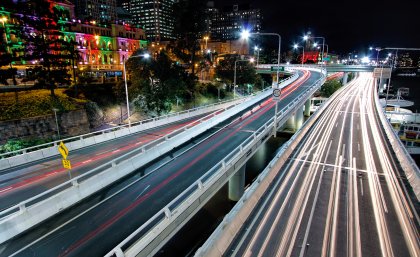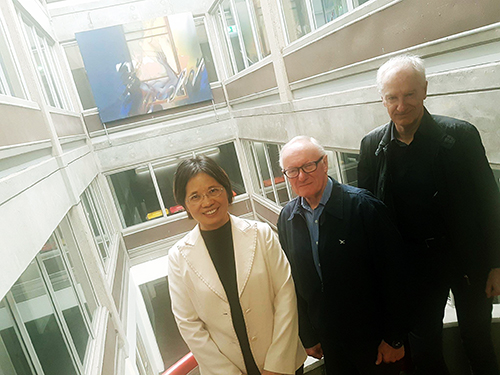
It has been 35 years since globally influential urban planner Professor Michael Batty last visited Brisbane. So what does he make of the changing face of Queensland’s capital?
A recipient of the Commander of the British Empire, the Nobel de Geographie, and a Fellow of the Royal Society, Professor Batty is in Brisbane to collaborate with University of Queensland School of Earth and Environmental Sciences researchers.
Specifically, he is working on a project with Associate Professor Yan Liu to analyse how information from technology such as electronic transport passes can help shape cities of the future.
“In the 1950s about 60 to 70 per cent of journeys were between home and work, but now those trips only account for around 10 per cent of journeys,” Professor Batty said.
“It’s much more common now that people will leave work, go to the shop, the gym, out for leisure or another appointment.
“There’s much greater connectivity between people due to being on text message and social media, which means plans are constantly changing.
“We see much greater complexity of movement than we did in past decades, and an extreme amount of data being generated – but how can we make sense of it all?”
To exemplify Professor Batty’s point, he recalls his last trip to Brisbane in 1982 was mostly organised by hand-delivered mail, and he had a tough job tracking down a relative he wished to visit in New Zealand.
Nowadays he could use email, social media and internet resources to perform those functions from the palm of his hand, which would open up greater possibilities and certainties, and see him making more frequent small journeys within his larger journey.
The ramifications are significant when it comes to urban planning and considering how things like post office boxes, physical shops and travel infrastructure need to be prioritised.
Professor Batty predicts that coming years will present significant challenges as the use of buildings change, our environmental considerations change, and we outgrow obsolete infrastructure.
“I do think our cities will become increasingly disconnected to how we behave as individuals,” he said.
“It will be increasingly difficult to tie the physical form of our cities to how we interact as a society, because so much will take place in the virtual world.
“For centuries buildings have outlasted the people occupying them, which can be problematic.”
 Dr Liu said her Australian Research Council Discovery Project would focus on Brisbane and Ningbo, a coastal city of similar metropolitan population in China.
Dr Liu said her Australian Research Council Discovery Project would focus on Brisbane and Ningbo, a coastal city of similar metropolitan population in China.
“We are not just looking at the way residents change their behaviour as a result of advancing technology, but also how developers and planners alter their approaches,” Dr Liu said.
“I expect there will be some societal differences between the way Australian and Chinese residents behave, but the biggest differences will be in the actions of the developers and planners.”
Secondary image: Associate Professor Yan Liu, Professor Michael Batty and collaborator Honorary Associate Professor Glen Searle.
Media: Associate Professor Yan Liu, yan.liu@uq.edu.au, +61 7 3365 6483. UQ Communications, communications@uq.edu.au, +61 7 3365 3439.
.jpg)

